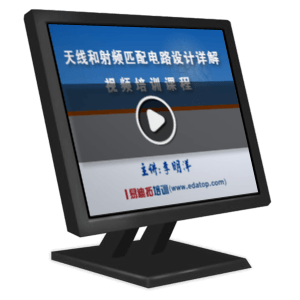- 易迪拓培训,专注于微波、射频、天线设计工程师的培养
利用UHF频段传输数据信息,这样的超级Wi-Fi你怎么看?
WATCH requires no coordination with or changes to legacy TV transmitters. Instead, TV signals are broadcast as normal and the WATCH system actively monitors whenever a nearby TV is tuned to a channel to avoid interfering with reception. The technology to allow this comes in two parts. One aspect of WATCH monitors TV broadcasts on a channel and uses sophisticated signal-canceling techniques to insert wireless data transmissions into the same channel; that eliminates TV broadcasts from interfering with the super Wi-Fi data signals being sent to computer users, Knightly said.
The other aspect of WATCH is dedicated to making certain that data transmissions do not interfere with TV reception; this part of the technology would require TVs to report when they are being tuned to a UHF channel, Knightly said. In practice, this could be accomplished with either smart TV remotes or next-generation TV sets. In the tests at Rice, Zhang constructed a "smart-remote" app that reported whenever a test television in the lab was tuned to a UHF channel. When that happened, the WATCH system automatically shifted its data transmissions to another part of the UHF spectrum that wasn't being used.
"Our tests showed that WATCH could provide at least six times more wireless data compared with situations where we were limited only to the traditionally available white-space spectrum," Knightly said. With WATCH in use, Knightly said it took a fraction of a second longer than normal to tune in a UHF TV broadcast on the test television. While the increment could be measured -- it was less than a 5 percent increase -- it was almost imperceptible to the person switching channels, he said.
Zhang and Knightly's report on the research, titled "WATCH: Wi-Fi in Active TV Channels," won best-paper honors last month at Association of Computing Machinery's MobiHoc 2015 conference in Hangzhou, China. Knightly said technology like WATCH will become increasingly important as the demand for wireless data services increases and the number of broadcast TV viewers decreases.
For example, a 2014 Cisco report found that nearly a half-billion mobile devices with data connections had been added to the global supply within the previous year, bringing the global total to 7.4 billion -- a bit more than number of people on Earth, according to the U.S. Census bureau. Of the 7.4 billion data-connected devices, Cisco found that more than a quarter were smartphones, which used an estimated 22 times more data than nonsmart devices.
"Allowing the UHF spectrum to be inefficiently used makes little sense today and will make even less sense in the future," Knightly said. "There are already more people in the United States who require mobile data services than there are people using broadcast-only TV. By showing that these two communities can coexist, we hope to spur innovation and a public debate about how this valuable resource could be used."






 沪公网安备 31011202014168号
沪公网安备 31011202014168号
 1427313829
1427313829 旺旺在线
旺旺在线 Skype Online
Skype Online 13761612886
13761612886 官方淘宝店
官方淘宝店
